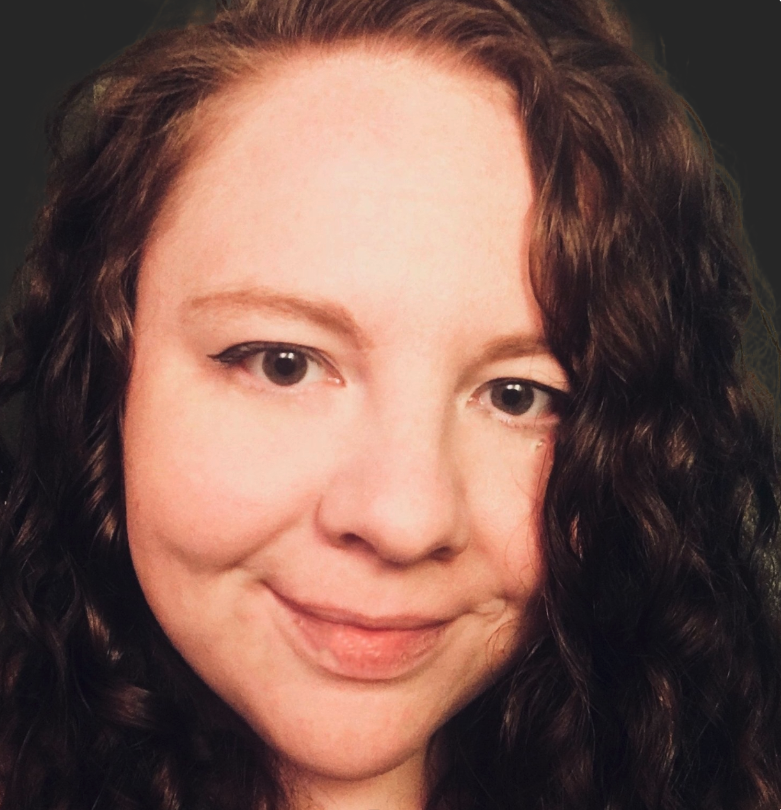“She’s stable.”
At the doctor’s words on that Friday evening — Aug. 10, 2018 — Rory Edwards let loose a sigh. His mother, 57-year-old Carla Davis, was three months into a diagnosis of Stage 4 myeloma and had been hospitalized the previous Monday with extreme pain.
Edwards had spent the week trading hospital-visit shifts with family members, their concern growing as Davis grew more confused each day. On Wednesday, Edwards watched as his mother twisted a sausage link between her fingers, mumbling to herself.
“Mom, what are you doing?” he asked.
Davis looked at her son.
“I’m losing it, Rory, I’m losing it,” she said.
By Friday morning, Davis had been transferred to the intensive-care unit. It took hospital staff most of the day to get her vitals stabilized. But now, late into the night, all seemed well.
“My mother’s fine,” Edwards thought to himself. “I need to get a drink. I need to get a bag.”
The then-34-year-old was addicted to drugs and alcohol, and it’d been more than 12 hours since his last hit. He told his sister he was heading around the corner to get some food. Instead, Edwards drove 40 minutes away from Antioch to Alameda, California, to meet his dealer.
He was smoothing the cocaine into lines on the cover of a book when his phone rang.
“Where are you?” his sister said. “Mommy’s not doing good. You need to get back here.”
He snorted the lines, chugged some vodka, and sped back to the hospital in 22 minutes.
The rest of the family was already there. Edwards walked into his mother’s room just in time to see doctors pulling a mask from her face, blood smeared around her mouth.
“My mom was gone.”
It might sound like rock bottom, but Edwards had further to fall.
Two days after Mother’s Day, 2019 — after a year of daily drinking and drug use — Edwards bought “the top shelf of the bottom shelf of alcohol,” drank it all, and drove into a tree.
He spent the night in jail, then called the only person he knew would answer: his CrossFit coach.
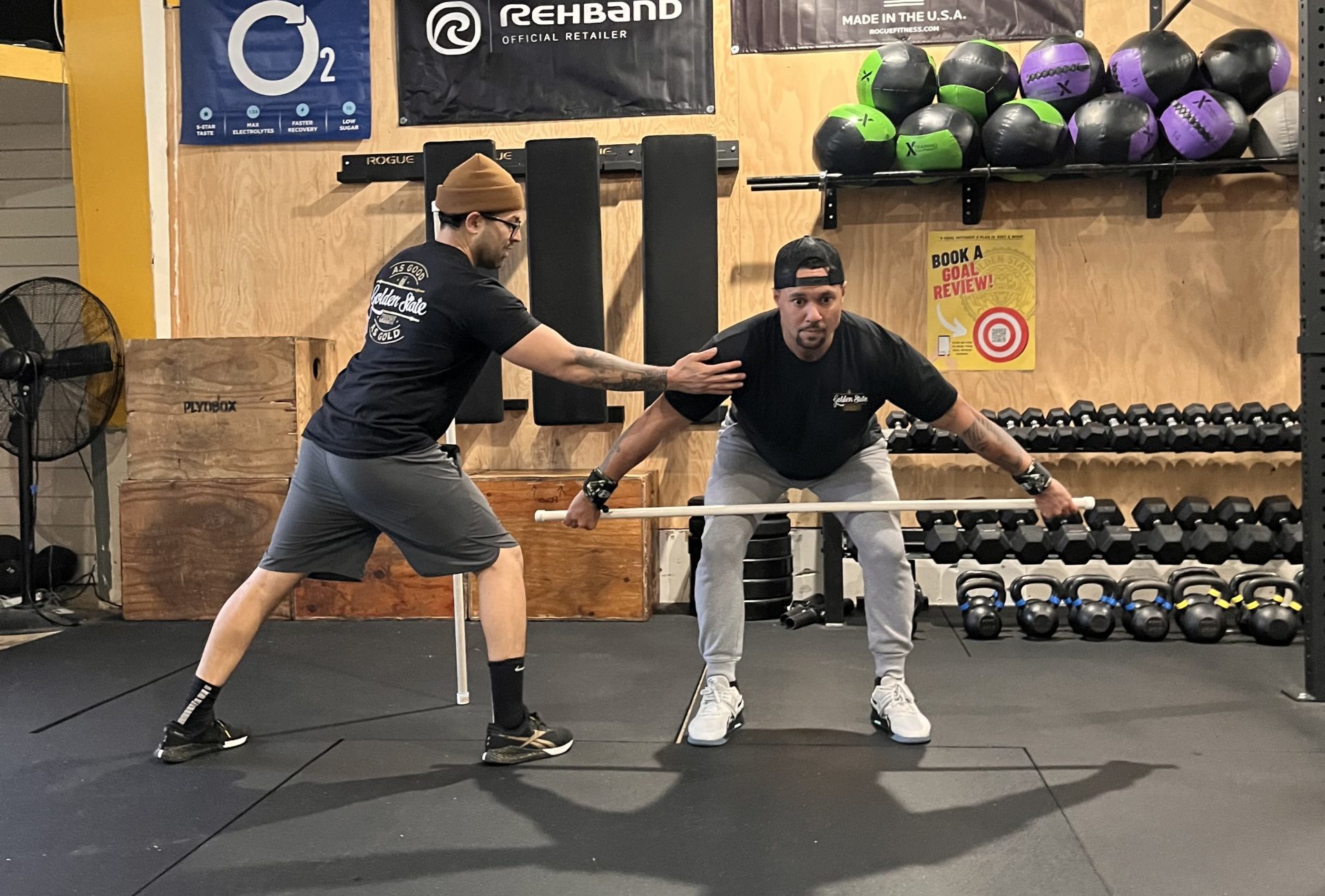
Chawg Sanchez (left) coaches athlete Rory Edwards (right).
Broken Promises
A 9-year-old Edwards was playing at a park in West Oakland when he saw a man buying drugs on the corner.
“These guys beat him up so badly and threw him into the trunk of a car and drove off,” Edwards recalled. “I remember seeing that and (thinking), ‘I will never drink and do drugs; I don’t want to end up like that.’”
And despite a childhood arguably at risk for such an ending — Edwards grew up in near poverty, with an abusive father, and was bullied for being biracial — he kept that vow for a long time.
Throughout school, Edwards excelled as a competitive swimmer. But by the time he got to college, he was burned out. He didn’t want to swim; he just wanted to fit in. And that meant partying.
It was a fun year. But when the money for housing ran out, Edwards moved back home and got a job working the early morning shift for UPS. Still, the party raged on: Edwards would hit the bar until 3 a.m., take a 15-minute nap, then work from 3:30 to 9:30 a.m. before afternoon classes at a community college. The lack of sleep and abundance of alcohol had a drastic effect on Edwards’ once-athletic physique — especially combined with a fast-food diet.
“Sometimes I would go to Taco Bell,” he said, “and literally while I’m in the drive-through, I’d be like, ‘You know what? I kind of want to get a couple of double cheeseburgers,’ and then I would drive right across the street, go to McDonald’s, and go home and just eat.”
By his early 20s, Edwards weighed 350 lb with more than 70% body fat. When he began to have trouble getting dates, he decided to change his lifestyle, dropping to 179 lb by cutting fast food and joining a local gym — in addition to less-healthy measures, including taking laxatives and restricting calories.
Unfortunately, food wasn’t his only addiction. In 2008, at 24, Edwards came down with a case of tonsillitis and was prescribed antibiotics and Vicodin, a highly addictive opioid pain medication. Though Edwards made an initial recovery without taking the opioid, his symptoms returned three months later. By then, the antibiotics were gone. So he pulled out the Vicodin.
“I took one pill,” Edwards recalled, “And I’m just like, ‘Oh, this feels good.’”
For the next year, he took Vicodin when he could find it, also experimenting with Percocet, OxyContin, and Norco, all opioids. He continued to abuse the medication even after the birth of his first son, only quitting after his girlfriend — who was being treated for cancer — discovered he’d been sneaking pills from her medicine drawer.
For a while, life seemed to be improving. Edwards’ girlfriend was in remission, he’d stopped using opioids, and he wasn’t even drinking that much anymore. In December of 2016, he joined a CrossFit gym in Richmond, California.
His first workout was 100 hang cleans for time at 95 lb, with 3 burpees at the top of every minute.
“And I was like, ‘Man, there’s no way I’m gonna let Alfred over here — who’s 50 years old — and this young kid over here think that they can outdo me,’” Edwards said. “And I died. I mean, I fell face-flat on the floor. … It humbled me.”
From then until October of 2017, Edwards excelled in the gym, thriving on the competition and the camaraderie. He watched “Fittest on Earth” night after night.
Until the bachelor party.
It was the last day of a long weekend celebrating a friend’s upcoming nuptials in Lake Tahoe, and Edwards was hungover. Someone called from a nearby room.
“And I walked in, and there was a bunch of people that they had met the night before — and there was just a mountain of cocaine,” he recalled.
It would wake him up and clear his head, the others insisted.
“That first line changed everything for me,” Edwards said.
He left the party with enough coke to last a few weeks. After that, he got the drug from someone he met while driving for a rideshare company. But he couldn’t do drugs and do CrossFit.
Edwards told the coaches he had to prioritize work.
“But the reality was that I was feeding my addiction,” he said.
Cocaine’s pull was even stronger than the prescription drugs’ had been, and he’d started drinking heavily again, too — especially after his mother’s cancer diagnosis in the spring of 2018.
The addiction fractured Edwards’ relationship with his girlfriend, and she kicked him out. Edwards went to live with his mother — who knew nothing of the drugs — in Antioch.
“I was actually happy,” he said, “because, number one, I could be close with my mom. Number two, I could drink and use all I want.”
But someone tipped her off.
“You’re better than that,” she said to Edwards. “You need to get your shit together.”
It was the last coherent conversation Edwards would have with his mother. She died six days later.
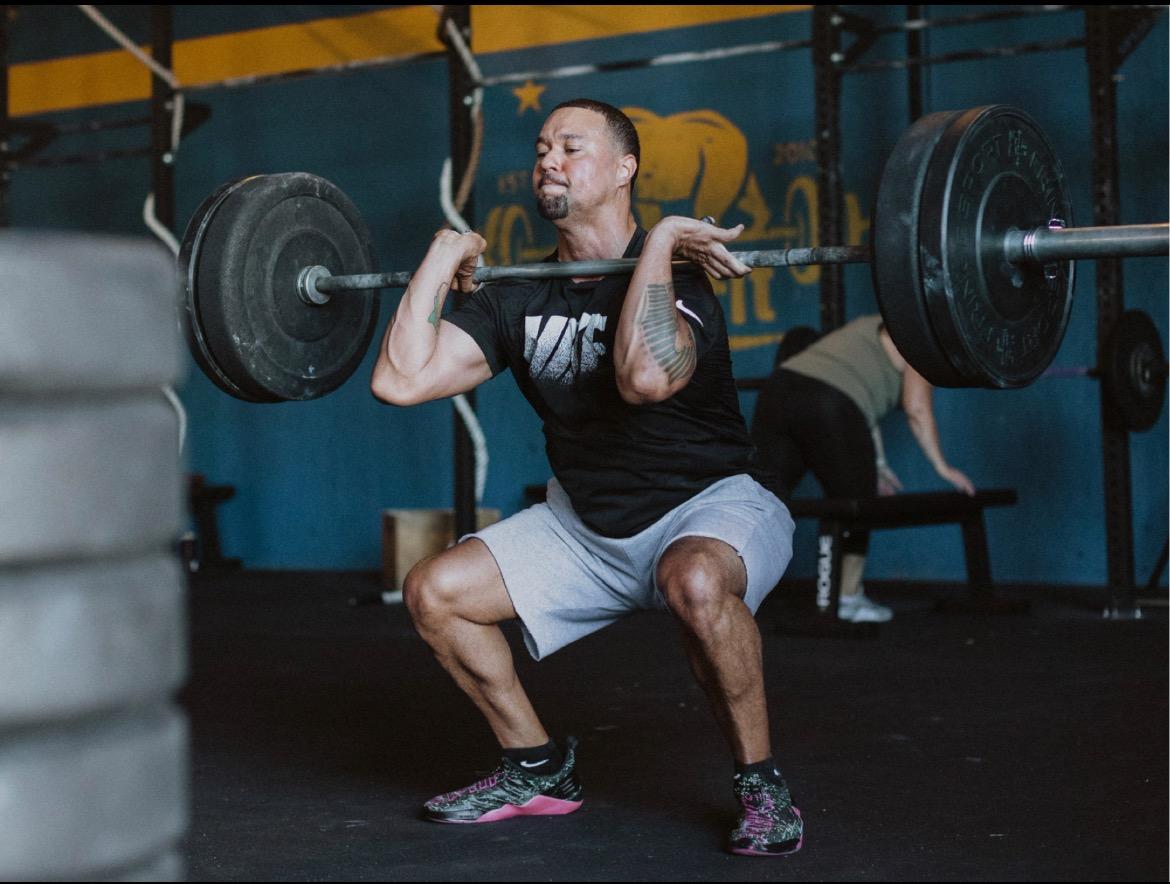
Photo by Rachel Ernst
Coach vs. Coke
For the year after his mother’s death, Edwards drank and used daily. Still, he told himself he wasn’t an addict. He held down his remote job and never missed a dime of his child-support payments. He was even doing CrossFit again, having joined Golden State CrossFit in the weeks before his mother’s death.
“I would go to CrossFit and just absolutely die in every workout,” Edwards said. “My lung capacity was the worst; forget about my strength and speed. I couldn’t hang.”
A self-described “closet drinker,” he’d sometimes forget he’d hidden empty bottles in his gym bag.
“I remember one time I went to CrossFit and we’re getting ready to work out, and I started pulling out my equipment and all these empty bottles started falling out,” he recalled. “And I looked around, nobody (had) seen it … and I still did not think that I had an issue.”
But affiliate owner and coach Chawg Sanchez suspected something was awry.
“It was almost like his attention wasn’t consistent,” Sanchez, 38, said. “Some days, he would be all in, doing great. And then some days it would be like something was on his mind; it didn’t seem like he was very focused. And when you start noticing that type of inconsistency, that’s when you kind of know something’s up.”
Sanchez didn’t confront Edwards or even ask what was up. Instead, he slowly and deliberately worked to gain Edwards’ trust. To do that, Sanchez focused on “setting him up for success almost every time he worked out.”
“And any time in a workout where he felt like he was down and didn’t do very well, I made sure to put an emphasis on what he did great,” Sanchez continued. “Over time, he gradually just started opening up to me.”
One night, Edwards began to cry as he was driving to meet his dealer.
“Why am I doing this?” he anguished.
He dialed Sanchez’s number and confessed everything.
Sanchez responded with nothing but support. The affiliate owner checked in on Edwards often, encouraging him to come to the gym, even if just to talk.
“I’m not going to tell you what you’re doing is great, but I’m also not coming from a judgmental standpoint, either,” Sanchez said.
He used relapses as coaching moments, just as he would for setbacks in the gym.
“It was mainly just encouraging the bright spots,” Sanchez explained. “A lot of times I’ll ask my athletes, ‘OK, well, what did you learn about how this workout went? Did this go good? Did this go bad? Why did it go bad? If it went bad, how are we going to fix it?’”
Sanchez had just finished coaching for the night when he got a call from the Santa Rita County Jail in Dublin, California. Edwards had spent the night in a cell, his Golden State CrossFit hoodie for a blanket.
“The main thing is you’re alive,” Sanchez told Edwards. “If you’re alive, that means you could still come back from this.”
In August of 2019, Sanchez programmed a memorial workout for Edwards’ mother. Stripped of his vehicle after the DUI, Edwards walked the 8 miles from his home to the gym. The workout — 6 rounds for time of 28 wall-ball shots, 19 deadlifts at 225 lb, and 61 double-unders — took him almost an hour and a half.
“What am I doing this for?” Edwards asked himself. “I’m never gonna be good at CrossFit.”
Afterward, he went to Walmart, bought the cheapest bottle of gin he could find, and decided he was done with CrossFit.
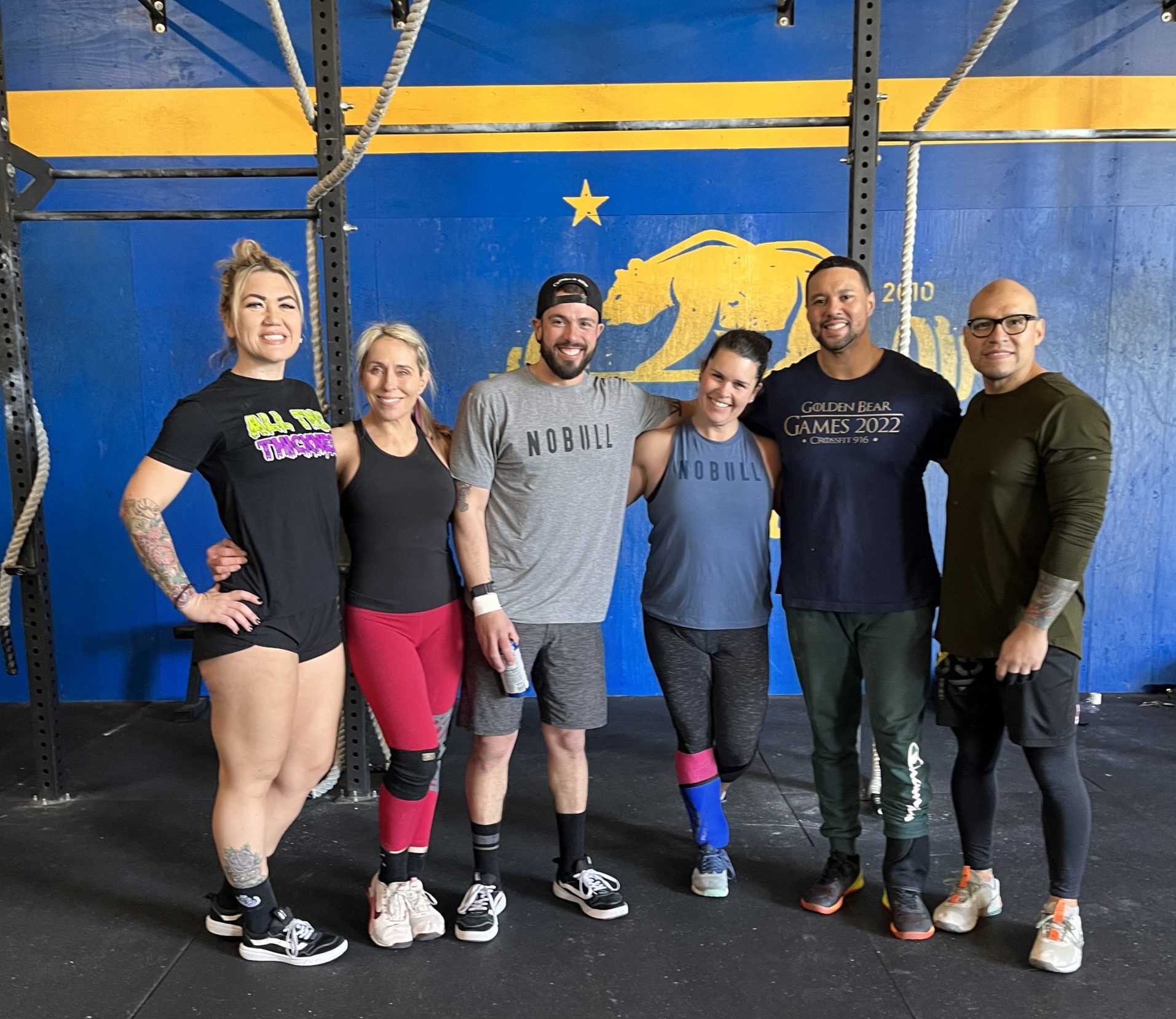
Rory Edwards (second from right) and others from the CrossFit 916 coaching staff.
Skills and Drills
After four months of doing little other than lying in bed and taking the bus to buy drugs and booze, in early 2020, Edwards moved into his stepmother’s house in Sacramento. His weight had tipped back over the 300s, and he hoped a geographic fresh start would lead to mental and physical ones, too. He built a home gym and reconnected with Sanchez for remote coaching.
Edwards even joined Alcoholics Anonymous (AA) — although he thought he didn’t need to follow the steps.
“Those steps seemed like another mirror that I just did not want to face,” he recalled.
After yet another relapse in June of 2021, Edwards checked himself into a nine-week outpatient rehabilitation program. When he finished, his counselor asked him what he was going to do next.
“I’m gonna work the steps,” Edwards said, “and I’m gonna go as hard as I can in CrossFit.”
Edwards went back to AA, this time getting a sponsor and working through the program’s 12 steps. In March of 2022, he joined CrossFit 916 in Elk Grove, California. The first thing he did was tell affiliate owner Alex James about his addiction.
“I’m really proud of you,” James, 48, said to Edwards, sharing that he’d lost his wife to alcoholism in 2018.
“People don’t have a lot of empathy for people that are alcoholics because they feel they can just stop, when they can’t,” he continued.
Not long after Edwards joined the affiliate, James went to hear him speak at an AA meeting.
“I want to help change people’s lives, and so I try to do that in every facet,” James said. “And Rory was someone that I feel I understand.”
Critical to Edwards’ success this time around was treating CrossFit as a component of recovery — not a replacement for it.
“We talk about — in the Level 1 (Certificate Course) — variance and the Hopper model; the balance of skills and drills and being prepared for anything,” he said. “When I look at my life outside of CrossFit … I have to prepare for everything. And when I do AA; when I reach out to another alcoholic or addict; when I’m being of service and I do something for someone else; when I pray; when I meditate — those are my tools of balancing. Those are my skills and drills.”
Edwards passed the Level 1 in January 2023 and began coaching classes at CrossFit 916 soon after — not just because he loves CrossFit, but because to be a great CrossFit coach is to be of service, a critical component of recovery in AA.
“Because as an alcoholic and as a drug addict, we get so caught up in self; everything is about us,” Edwards explained. “When I’m surrounded by people and I’m doing things for other people, I am out of my head. … That’s why I love to coach; that’s why I love our community.”
CrossFit, he clarified, is not a replacement addiction.
“It legitimately is parallel to my recovery,” he said. “Life does not care about me being sober … life is going to happen. But when rubber meets the road, what are you going to do? Are you going to be prepared for the balance of skills and drills in life? And that’s what CrossFit teaches me.”
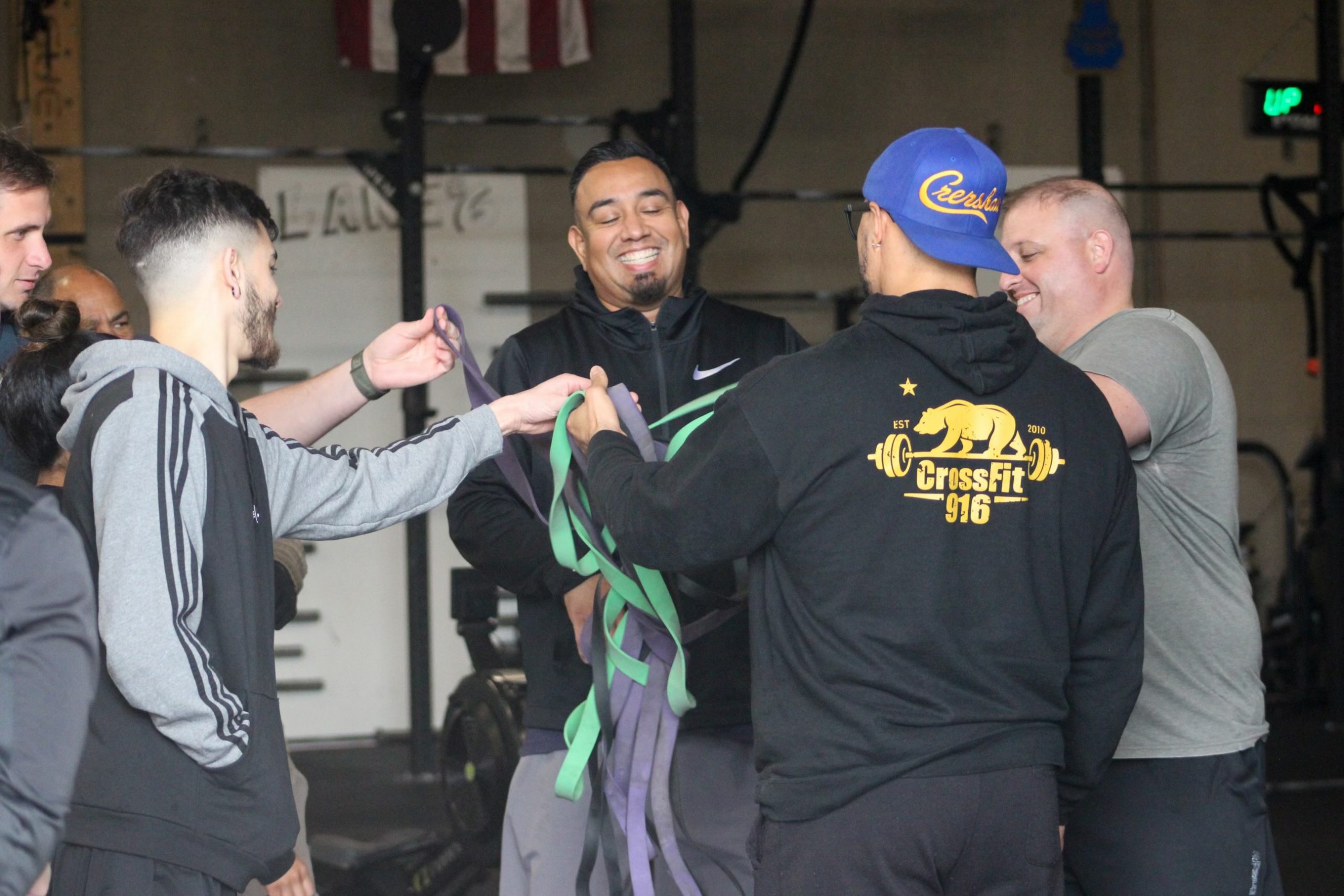
Today, Edwards (second from right) aspires to be the same kind of role model and figure of support his coaches were for him.
Just Show Up
Today, Edwards coaches two to three classes per week at CrossFit 916 — “he’s definitely made the gym a better place because of his positive energy,” James said — and has three goals for his CrossFit career moving forward: to become a Certified CrossFit Level 4 Coach, to compete as a master in the CrossFit Games, and to open his own CrossFit affiliate one day — possibly named CrossFit Carla, after his mother.
Mostly, Edwards wants to do for others what his coaches have done for him.
“I think the reason I never gave up on him is because he kept showing up,” Sanchez said. “And that’s kind of what I tell everybody that’s at the gym … whatever you need, we’re going to help you the best we can, but you have to show up; you have to show that you want change.”
It’s not that coaches are therapists, Edwards clarified, but “what coaches do is therapeutic,” he said.
“I want to be able to help other people on so many different levels,” he said. “I want to be able to show people that there is a place you can come that is a healthy coping skill, and we can work through some things, whether it’s food addiction, if you have diabetes, if you have cancer; whatever you feel like is holding you back in life.”
“I want to welcome people in,” Edwards continued. “Whether you’re an athlete and superb or you’re like Annie in Auburn that’s 92 years old.”
